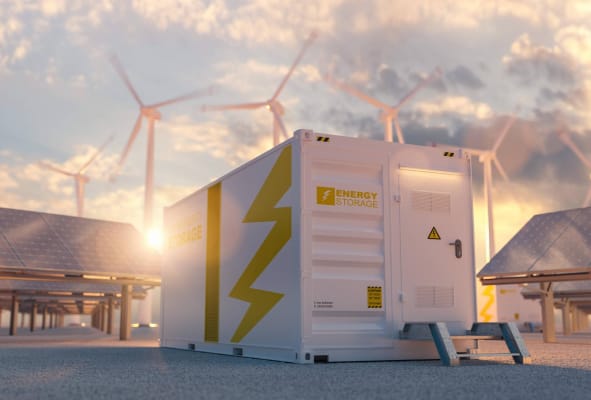The Environmental Benefits of Solar Panel...
Read more
As the global demand for clean and sustainable energy continues to rise, the importance of renewable energy storage solutions becomes increasingly apparent. While renewable energy sources such as solar and wind power offer abundant and environmentally friendly alternatives to traditional fossil fuels, their intermittent nature poses significant challenges for widespread adoption. Addressing these challenges and seizing the opportunities in scaling up renewable energy storage solutions is crucial for accelerating the transition to a low-carbon future.

One of the primary challenges in scaling up renewable energy storage is the intermittency of renewable energy sources. Unlike conventional power plants, solar and wind power generation fluctuates with weather conditions, leading to mismatches between supply and demand. This intermittency can strain existing energy grids and require innovative storage solutions to balance the variability in energy production.
Furthermore, the current storage technologies, such as lithium-ion batteries, face limitations in scalability, cost-effectiveness, and environmental impact. Scaling up these technologies to meet the growing demand for energy storage requires significant investment in research and development to improve efficiency, durability, and sustainability.
Despite these challenges, there are numerous opportunities for innovation and advancement in renewable energy storage solutions. Emerging technologies, such as advanced battery chemistries, flow batteries, and hydrogen storage, hold promise for overcoming the limitations of existing storage technologies. These technologies offer higher energy densities, longer lifespans, and improved environmental sustainability, making them ideal candidates for large-scale deployment.
Additionally, integrating renewable energy storage solutions with smart grid technologies and demand-side management strategies can enhance grid stability and flexibility. By leveraging advanced control systems and predictive analytics, utilities can optimize energy storage operations, mitigate grid imbalances, and maximize the utilization of renewable energy resources.
Moreover, the transition to renewable energy storage presents economic opportunities for job creation, innovation, and economic growth. Investing in renewable energy storage infrastructure can stimulate local economies, attract private investment, and foster a competitive market for clean energy technologies.
In conclusion, scaling up renewable energy storage solutions is essential for unlocking the full potential of renewable energy sources and achieving a sustainable energy future. While challenges such as intermittency and scalability persist, the opportunities for innovation, technological advancement, and economic development are immense. By addressing these challenges and embracing the opportunities, we can accelerate the transition to a cleaner, more resilient, and more sustainable energy system for generations to come.